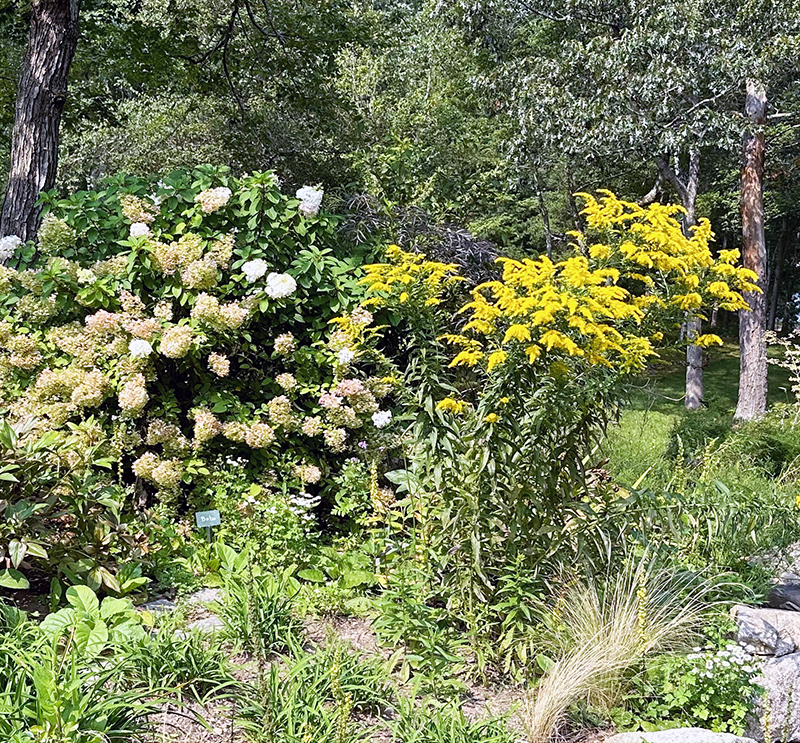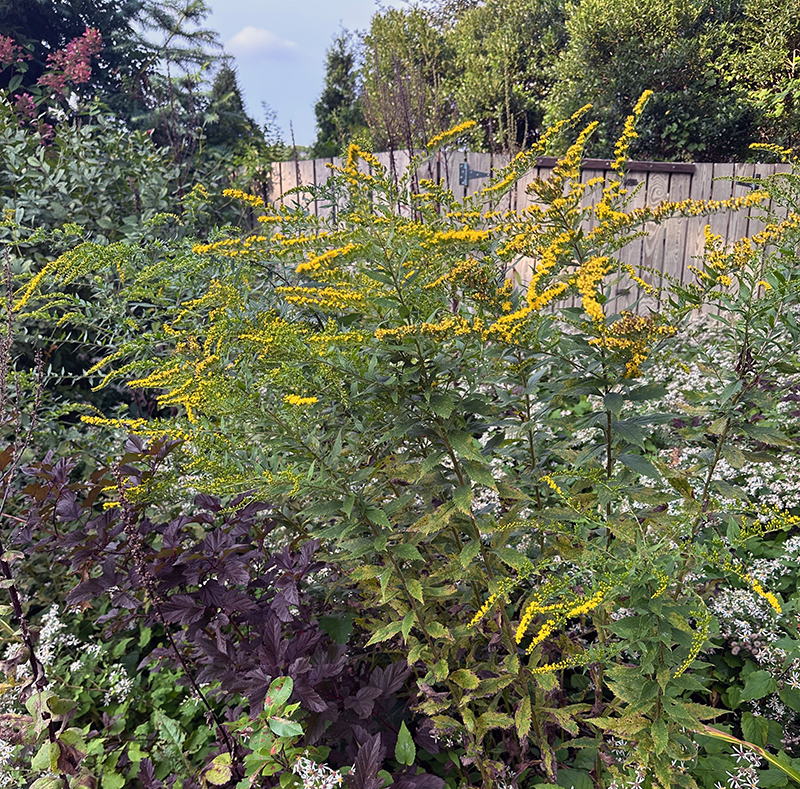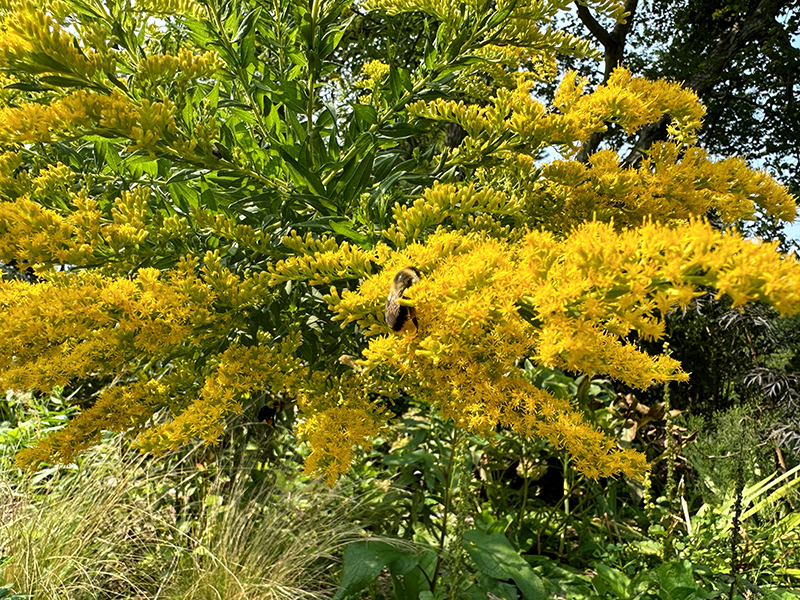Name: Solidago canadensis aka Canada goldenrod or Canadian goldenrod
Type of Plant: A perennial native to north America that is adaptable and an important support plant for a wide variety of insects including long-tongued bees, short-tongued bees, wasps, flies, beetles, and a few butterflies and moths. Beetles and other insects feed on this plant, and many birds and mammals eat the foliage and seeds.
Why I Love This Plant: I appreciate this goldenrod for the many insects, birds and animals that it supports. With good reason, goldenrods are called “keystone plants” because of the many species that feed on the foliage or flowers. I love how Solidago looks in the fall garden and as a cut flower in bouquets.
This perennial is the perfect tall flower for the back of borders and wild flower plantings.
A Word to the Wise: No, goldenrod does NOT cause hay fever. Allergies are caused by ragweed (Ambrosia artemisiifolia) , which is not yellow flowering and showy.
When you leave Solidago canadensis in the garden, you’ll need to be willing to edit it when the plant tries to take over. Since the roots of this goldenrod have been shown to have allelopathic properties that can suppress the growth of other plants, know that in garden situations you may need to pay attention and edit when necessary. But in wildflower meadows this plant will grow in community with other natives.
Note: in other parts of the world this plant is considered invasive. Here in North America, it’s a native plant and as such could be termed “vigorous” but not invasive.

Canadian goldenrod can grow between 3 and 5 feet tall. Since it self-hybridizes, there can be clumps that are shorter, taller, fuller or thinner in habit. As a garden maker, learn to leave it where you like how it looks and adds to the fall garden, but remove elsewhere.

Some Solidago canadensis is more open in growth habit. In general this plant is drought-tolerant but it thrives in soils that are more consistently moist as well, which is why you’ll frequently see it growing in roadside ditches where there is more water.

This goldenrod planted itself by my shed, next to some summer phlox. I liked the placement so I’ve left it there, but as it spreads out too far, or seeds in the ground around this clump, I edit it out by pulling young plants and excess stems.

Bees love Canadian goldenrod.

0 Comments